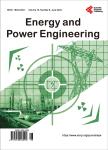Overvoltage Condition Assessment of a Microgrid Due to Faults Occurring in the Islanded Mode of Operation
Overvoltage Condition Assessment of a Microgrid Due to Faults Occurring in the Islanded Mode of Operation作者机构:Foundation for the Technological Development of the Engineering Sciences (FDTE) Sã o Paulo Brazil Department of Electric Power and Automation Engineering University of Sã o Paulo Sã o Paulo Brazil
出 版 物:《Energy and Power Engineering》 (能源与动力工程(英文))
年 卷 期:2015年第7卷第11期
页 面:525-534页
学科分类:1002[医学-临床医学] 100214[医学-肿瘤学] 10[医学]
主 题:Islanded Mode Microgrids Overvoltage Short-Circuit
摘 要:This paper presents the results of the simulations and their respective analyses corresponding to the power frequency overvoltages resulting from various fault types occurring inside a microgrid. During the islanded mode of operation, the analysed microgrid can be simultaneously fed by a diesel generator, a 1 MW wind power turbine, a small solar system and a 1 MW hydroelectric scheme. The operating voltage of the microgrid is 2.4 kV. During a fault in the system, the overvoltages normally occur in two remarkable instants. The first one occurs at the beginning of the fault itself. The second one occurs at the instant when the fault is cleared. The major concern here is the overvoltage during the fault period. Due to the travelling wave effect along cables and overhead lines composing the microgrid system, these overvoltages can be amplified, thus jeopardizing the insulation level of the microgrid transmission system and related equipment. Much of the work available now is dedicated to overvoltages present in high-voltage systems leaving a gap for the study and behaviour on low voltage microgrid systems. The overvoltage stress is characterized by the maximum low-frequency, short-duration (crest value) of the overvoltage. Both cables and overhead lines that constitute the microgrid transmission system are characterized by their R-L-C parameters. The simulations of the microgrid system are conducted using the ATP program. According to the international ANSI and IEEE standards, the minimum BIL (Basic Impulse Insulation Level) and BSL (Basic Impulse Switching Level) for the 2.4 kV voltage level are 20 kV and 10 kV, respectively;thus, care should be taken so that the healthy phases upon which commonly appear such overvoltages are not exceeded in their insulation level.



